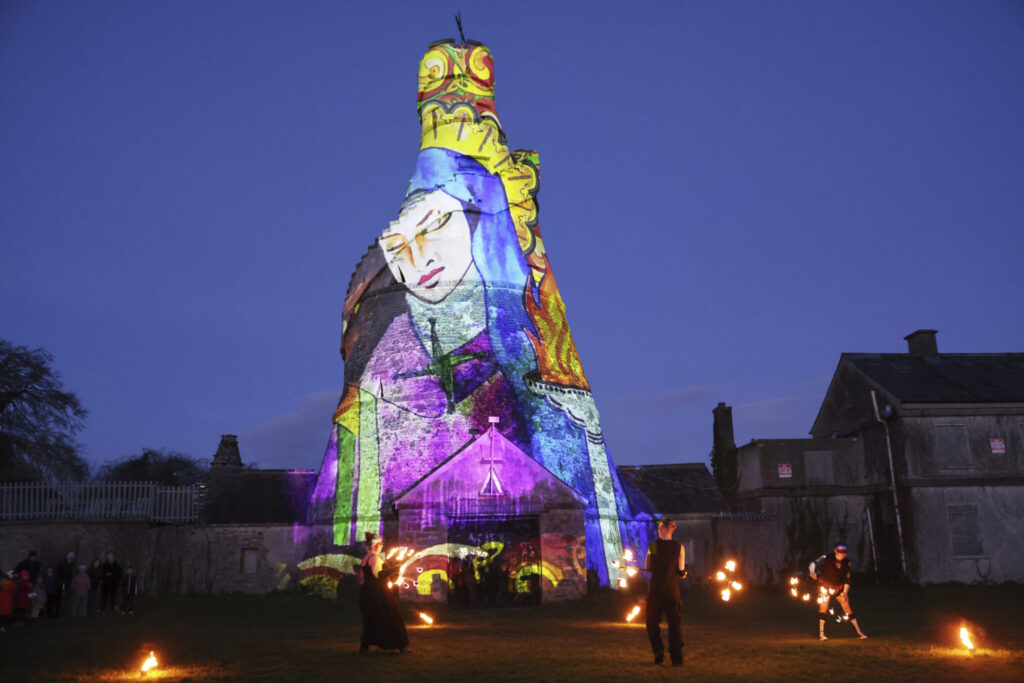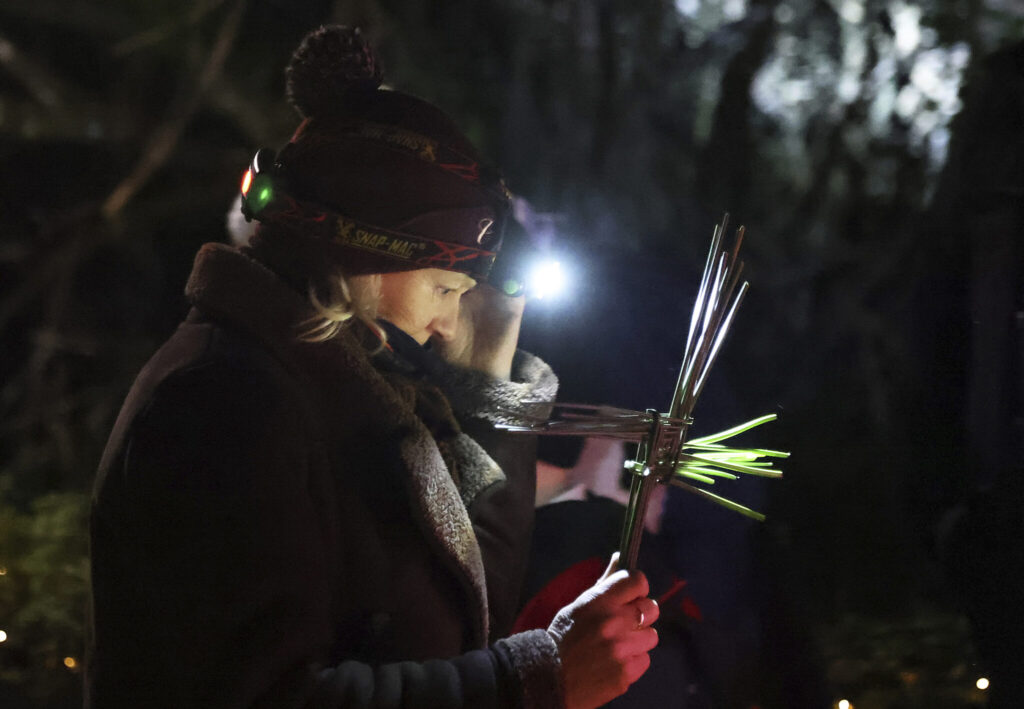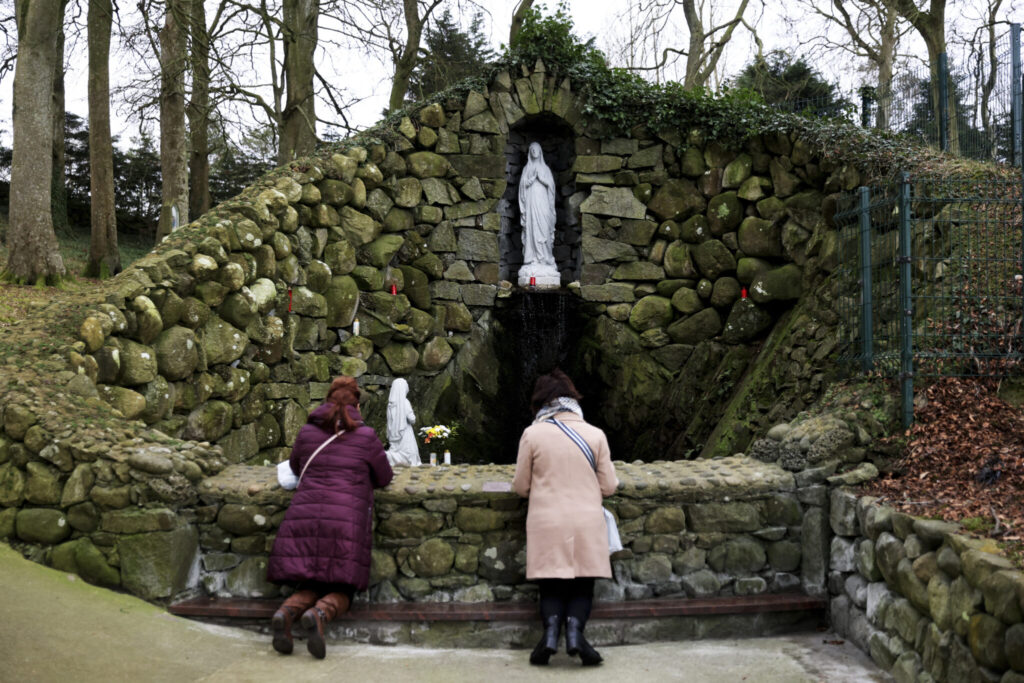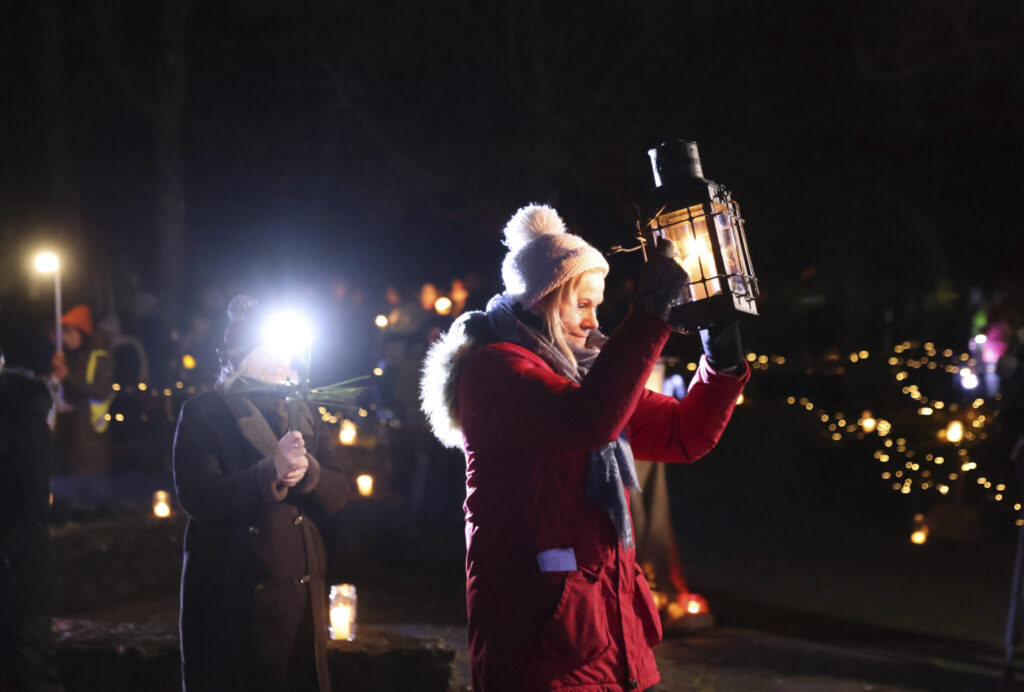Devotees of St. Brigid plan to celebrate her Sunday with the scheduled return of a relic associated with the so-called matron saint of Ireland. The festivities come about a millennium after her remains were removed from the town of Kildare, where she founded a prestigious abbey and inspired a host of colorful, miracle-filled legends.
Quick Read
- St. Brigid’s Celebrations: Devotees of St. Brigid are preparing to celebrate her feast day in Kildare, Ireland, with the return of a relic associated with the saint, marking the 1,500th anniversary of her death.
- Growing Popularity: St. Brigid is gaining recognition in the 21st century as a symbol of feminine spirituality and empowerment, amidst growing disenchantment with traditional patriarchal religious institutions.
- Historical Background: St. Brigid, sharing her name with an ancient Celtic goddess, was known for her miracles, compassion, and the founding of a monastic settlement in Kildare.
- The Relic’s Return: A bone fragment believed to be from St. Brigid’s skull, which was safeguarded in Portugal and later returned to Ireland, is being brought back to Kildare for permanent display.
- Veneration of Relics: The Catholic Church promotes the veneration of saints’ relics to honor their pious examples, distinguishing it from worship reserved for God alone.
- St. Brigid’s Day Observance: St. Brigid’s Day and the pagan holy day Imbolc both fall on February 1st, celebrating the coming of spring and honoring Brigid’s legacy.
- Cultural Shift in Ireland: The increasing interest in St. Brigid reflects a shift in Irish society towards more inclusive and diverse forms of spirituality, beyond traditional Catholicism.
- Commemorative Events: The relic’s return to Kildare will be accompanied by various activities, including processions, music, worship, and a “Pause for Peace” to promote global harmony.
- Global Celebrations: St. Brigid’s Day is being marked not only in Ireland but around the world, with cultural events, religious services, and ceremonies reflecting both Christian and pagan traditions.
The Associated Press has the story:
Who was St. Brigid? why is she inspiring many 1,500 years after her death?
Newslooks- (AP)
Devotees of St. Brigid plan to celebrate her Sunday with the scheduled return of a relic associated with the so-called matron saint of Ireland. The festivities come about a millennium after her remains were removed from the town of Kildare, where she founded a prestigious abbey and inspired a host of colorful, miracle-filled legends.
The celebration in her hometown, southwest of Dublin, is part of Brigid 1500 — a series of observances across the world centered around the saint’s feast day of Feb. 1, marking the 1,500th anniversary of her death around the year 524.

In a sense, Brigid is on a roll. The commemorations come a year after Ireland began honoring her with an annual public holiday — the first Irish woman to be recognized with one.
While St. Patrick has long been the saint most identified with Ireland, Brigid has gained a growing following in the 21st century. Devotees draw inspiration from Brigid the saint — and from Brigid the ancient pagan goddess, whose name and attributes she shares — as emblematic of feminine spirituality and empowerment. This comes amid growing disenchantment with the patriarchal and historically dominant Catholic Church.
WHO WAS BRIGID?
First question: which Brigid?
Brigid was the name of a prominent goddess worshipped by ancient pagan Celts — the namesake of the saint who lived in the fifth and sixth centuries.
Brigid the goddess was associated with everything from poetry, healing and metal crafting to nature, fertility and fire. She was honored on the mid-winter holy day of Imbolc, still commemorated on Feb. 1, which also became St. Brigid’s Day.

St. Brigid’s father is said to have been a ruler, her mother enslaved. Though Brigid’s life story has been embellished by legends, she is believed to have been the abbess of a monastic settlement of men and women that became a center of arts and learning and that gave the town its name, Irish for “church of the oak.” One legend says that when the local king agreed to give her only enough land for her monastery that could fit under her cloak, she miraculously spread it across the surrounding countryside.
St. Brigid traveled, preached and healed. She’s often depicted with images of fire and light and is associated with fertility, care for living things and peacemaking.
According to another legend, Brigid gave her father’s jeweled sword to a needy man for him to barter for food.
WHAT RELIC IS BEING RETURNED TO KILDARE?
Brigid was believed to have been buried at her monastic church in Kildare. Around the ninth century, her remains were moved to the northern town of Downpatrick in hopes of avoiding the pillages of Vikings and others. That shrine was later destroyed by English troops during the Protestant Reformation.

Various churches on the European continent claim to have relics of St. Brigid. This includes a bone fragment from Brigid’s skull, which tradition says was brought to a church in Portugal by three Irish knights. A fragment of that relic was returned in the 1930s to Brigidine Sisters elsewhere in Ireland and is stored in a small metal reliquary, shaped like an oak tree, an image associated with Brigid. That’s the relic being returned to Kildare.
The relic’s new resting place will be the Catholic parish church named for St. Brigid, which plans to display it permanently.
WHAT IS A RELIC, AND WHY DO CATHOLICS VENERATE THEM?
Catholic canon law says the church “promotes the true and authentic veneration” of saints because of their pious examples. This can involve veneration of relics — which can include fragments of bodies of saints, as well as their clothing and other items associated with them.
“Veneration must be clearly distinguished from adoration and worship, which are due God alone,” says the Catechism of the Catholic Church.
WHAT IS ST. BRIGID’S DAY?
St. Brigid’s Day and Imbolc, a pagan holy day associated with the goddess Brigid and heralding the coming of spring, both fall on Feb. 1, although Ireland is observing the public holiday on the following Monday.

WHY IS BRIGID GAINING A 21ST-CENTURY FOLLOWING?
Brigid’s moment is happening as many Irish are disillusioned with traditional Roman Catholicism and its patriarchal leadership amid a secularizing culture. Even many devout Catholics are dismayed over scandals including the cover-ups of sexual abuse.
Whether devotees honor Brigid primarily as a saint, a goddess or some combination of both, they see Brigid as emblematic of feminine spirituality, environmental care and artistic creation.
Brigid’s Day is “an invitation to stop the pointless millennia old war of Christianity versus paganism” and see “the wisdom and beauty in both lineages,” wrote Melanie Lynch, founder of Herstory, which campaigned in support of the new national holiday.
HOW IS ST. BRIGID’S DAY BEING COMMEMORATED?
The most dramatic event is the scheduled return of the relic to Brigid’s hometown, with a short procession to St. Brigid’s Parish Church from Solas Bhride — a Christian spirituality center led by Brigidine Sisters in Kildare with a mission of welcoming “people of all faiths and of no faith.” The procession is to be led by three girls riding ponies and dressed as the medieval Irish knights who, one tradition says, accompanied the relic to Portugal centuries earlier.
“What amazes me is, 1,500 years later, she’s still remembered with love in Kildare and Ireland,” said David Mongey, chair of Into Kildare, the local tourism board. “Her words, her wisdom and her actions mean more today than they ever did, when you think about how we treat our land, how we treat our environment, how we treat our animals, how we treat each other and how we treat ourselves.”
Several events are being organized by Solas Bhride, Irish for “Light of Brigid,” including a noontime “Pause for Peace.” Thousands of students plan to mark the pause on the nearby Curragh Plains by making a human formation of a large St. Brigid’s Cross, shaped by a square with four symmetrical arms.
Others around the world are joining in the pause — a minute’s silence at noon local time — said Brigidine Sister Rita Minehan, one of the founders of Solas Bhride.
“We are sending out a message that we actively oppose warfare in our world and the proliferation of arms,” she said. “It’s rather frightening what’s happening in our world. It’s sorely in need of peace, and Brigid was renowned as a peacemaker.”
Other Kildare locations are hosting music, ecumenical worship and other activities.
The group Herstory, which uses arts and education to promote female role models, plans events around Ireland on the holiday and days afterward. These include dramatic lightshows in which artistic depictions of Brigid are projected onto historic landmarks.
Elsewhere worldwide, Irish-heritage groups plan to mark the day with concerts and cultural events. Churches plan Masses in honor of the saint, while Wiccan and other pagan groups plan meditations and other ceremonies in honor of the goddess and in observance of Imbolc.






